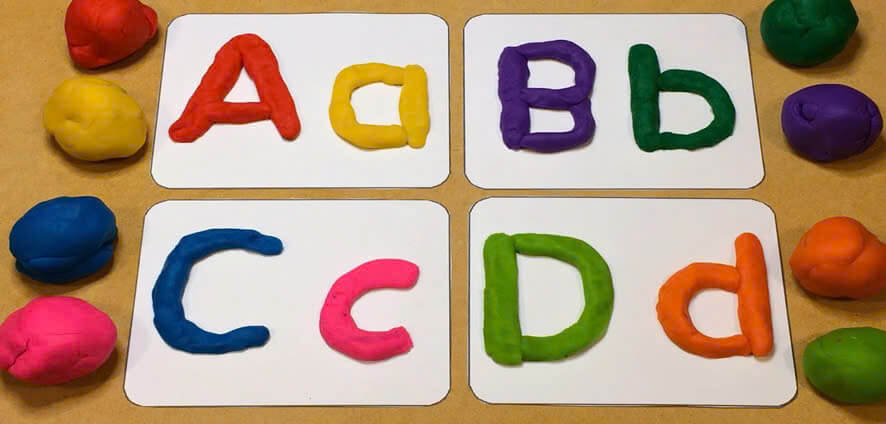Learning to write in Kindergarten is such an exciting time! Kindergarten handwriting practice is a vital step in a child’s literacy development. This phase is where children transition from basic pencil grip to forming letters and words with control and clarity. By focusing on handwriting practice for kindergarten, teachers and parents can help children build a strong foundation for their future academic success. This guide provides a comprehensive understanding of how to approach handwriting practice for kindergarten, covering everything from fundamental skills to modern techniques that make learning fun and effective.
The Importance of Kindergarten Handwriting Practice
Kindergarten handwriting practice serves as a crucial element in early childhood education. This process helps children refine their fine motor skills, develop hand-eye coordination, and build confidence in their writing abilities.
1. Develop Fine Motor Skills
Engaging in handwriting practice encourages children to use the small muscles in their hands and fingers, improving dexterity and control. These fine motor skills are essential not only for writing but also for activities like buttoning clothes, tying shoes, and using scissors. Handwriting practice with tracing activities, like following dotted lines or tracing letters, are fantastic for building these skills.

2. Improve Hand-Eye Coordination
Have you ever noticed how your eyes and hands work together? The process of forming letters in handwriting practice for kindergarten requires children to coordinate their hand movements with their visual perception. This hand-eye coordination is crucial for various tasks, from reading and writing to playing sports and drawing.
3. Enhance Letter Recognition
Before kids can read, they need to know their letters! By repeatedly tracing and writing letters, children become familiar with their shapes and formations. This helps them recognize letters in books and other printed materials, laying the foundation for reading skills.

4. Build a Foundation for Writing
Kindergarten handwriting practice provides the building blocks for future writing success. As children master letter formation, they can move on to writing words, sentences, and eventually stories.
5. Boost Confidence
There’s nothing like that feeling of “I did it!” When kids complete a handwriting exercise, they feel proud of themselves. This boosts their confidence and makes them eager to keep learning.
Engaging Kindergarteners in Handwriting Practice
Handwriting practice doesn’t have to be dull and repetitive. In fact, there are numerous ways to make handwriting engaging, interactive, and enjoyable for young learners. Here are some engaging strategies to make a fun and effective handwriting practice for kindergarteners.
1. Handwriting Practice Worksheets for Kindergarten
Worksheets remain a valuable tool for structured handwriting practice, but they can also be fun if they’re designed creatively. Choose worksheets that are developmentally appropriate and engaging:
a. Structured Worksheets
Structured handwriting worksheets for kindergarten are essential for ensuring proper letter formation. These typically include:
- Dotted letters for tracing: These help children learn the shape and strokes of each letter. Tracing dotted letters helps children internalize the motor movements associated with forming each character.

- Clear guidelines for letter formation: Simple worksheets that show how letters should be started and the direction in which strokes should go are perfect for young learners who are still mastering basic writing skills.
- Progressive complexity: Good worksheets will start with larger spaces for tracing and gradually shrink as the child progresses to more independent writing.
Structured worksheets not only guide children through the mechanics of writing, but they also provide a sense of achievement as they move from one skill level to the next.
b. Free Printable Handwriting Worksheets for Kindergarten
Numerous online resources offer a wealth of free handwriting worksheets for kindergarten. These cover:
- Letter formation: Worksheets that help children trace and form the alphabet, numbers, and even their names.

- Number writing practice: Practice sheets that allow children to focus on writing numbers, which is equally important for early education.
- Fun themes and characters: Worksheets can feature holiday themes or seasonal themes that make writing practice more exciting, like Halloween-themed letters or summer-themed handwriting sheets.

With free printable handwriting worksheets, parents and teachers have a versatile tool they can use at home or in the classroom to reinforce proper handwriting habits.
Check our Kindergarten Handwriting Worksheets for a wide range of free printable handwriting practice worksheets and resources!
c. Progressive Practice
Select worksheets that gradually increase in complexity. Begin with simple tracing activities and gradually move on to more complex tasks like copying and independent writing. By offering worksheets that increase in difficulty, children can slowly build their skills and confidence. For example:
- Step 1: Start with letter tracing worksheets that allow children to practice letter shapes.
- Step 2: Move on to worksheets that require children to copy the letters or words.
- Step 3: Finally, challenge them with worksheets where they must write the letters or words independently.
The progression from tracing to independent writing ensures that the child is mastering each step before moving on to more challenging tasks.
2. Interactive Handwriting Practice
Integrate technology to make practice more interactive and motivating. Here are some ways to introduce interactive handwriting practice for kindergarteners:
a. Tablet-based Writing Apps
Technology can be a great ally when it comes to engaging young learners. These apps often feature:
- Interactive tracing activities: Children can trace letters directly on the tablet screen using their finger or a stylus, helping them develop muscle memory in a playful environment.
- Instant feedback: Many apps provide instant feedback, letting children know when they’ve made a mistake and guiding them toward the correct formation of letters.
- Games and rewards: Apps often gamify handwriting practice, rewarding children with points, stickers, or animations when they complete tasks correctly.
Using these apps can make handwriting feel more like a fun activity rather than a chore, and they can be particularly helpful for keeping tech-savvy kids engaged.
b. Interactive Handwriting Worksheets
In addition to traditional paper worksheets, interactive worksheets can offer an engaging twist on handwriting practice for kindergarten. Many digital platforms have features that allow children to practice writing in a more interactive environment:
- Automatic handwriting recognition: Some interactive worksheets come with handwriting recognition features, allowing children to see if their letters are correctly formed. This technology offers immediate correction, which can be highly beneficial in the learning process.
- Interactive elements: Some worksheets include interactive features like animations, sounds, or pop-up guides that demonstrate the proper way to form letters or words.
Worksheetzone provides an innovative online handwriting practice tool that lets children directly practice writing through their tablets or touchscreen devices. By providing immediate visual feedback, this tool will help children understand proper letter formation while making practice engaging and fun. Moreover, parents and teachers can easily save or print the completed work, making it perfect for both classroom use and at-home practice.

Interactive handwriting worksheets can be a great addition to a mixed-mode handwriting practice routine, combining the benefits of traditional handwriting with modern technology.
c. Game-based Learning Platforms
Incorporate educational games can turn handwriting into an exciting adventure. Many educational websites and apps incorporate handwriting tasks into interactive games. These platforms might include:
- Adventure-style games where children go on a quest and must complete handwriting challenges to unlock new levels or rewards.
- Letter-writing challenges within games that require children to write letters, words, or even sentences to solve puzzles or defeat characters.
Games like these make handwriting practice feel like a natural part of playtime, which can be a powerful motivator for young learners.
3. Multisensory Learning in Handwriting Practice
Engaging multiple senses can make handwriting practice more engaging and enjoyable. By catering to different learning styles, you can enhance a child’s ability to remember and execute proper handwriting techniques.
a. Tactile Learning
Tactile activities involve the sense of touch and can be a fantastic way to help children solidify their handwriting skills. Some tactile methods include:
- Sand writing: Have children form letters in a tray of sand. This provides a large, open space for children to practice while also engaging their sense of touch.

- Play dough letter formation: Using play dough to form letters helps children develop both hand strength and familiarity with letter shapes.

- Textured surfaces: Children can trace letters on textured surfaces like sandpaper or fabric to help reinforce the feeling of forming letters.
Tactile learning engages the hands in a physical way, which is an excellent method for strengthening the fine motor skills needed for handwriting.
b. Visual Learning
Visual aids can be incredibly helpful when teaching proper handwriting techniques. Consider using:
- Letter formation charts: Hang a chart in the classroom or at home to remind children of the correct way to form each letter.

- Videos or animated guides: Many websites offer animated videos that show children the proper strokes for forming letters. These can be a great supplement to printed worksheets.
- Illustrations and pictures: Worksheets with illustrations can make handwriting more engaging. For example, pairing the letter “A” with an image of an apple makes it more memorable for young learners.
Using visual aids helps reinforce the shape and structure of letters, making them easier for children to recall when writing on their own.
c. Kinesthetic Learning
Kinesthetic activities involve physical movement and can be particularly useful for active learners. Here are a few fun ways to incorporate movement into handwriting practice:
- Air writing: Have children “write” letters in the air with their arms. This large-motor activity helps reinforce the motion of letter formation.

- Body letter formation: Encourage children to form letters using their bodies or with a group of peers. This adds a fun, social element to handwriting practice.
- Floor writing: Create large letters on the floor and have children trace them with their feet. This is an engaging way to practice writing in a big way.
Kinesthetic activities help children integrate gross motor skills with fine motor skills, strengthening their muscle memory for handwriting.
These mentioned strategies are just the beginning! For a deeper dive into how to practice handwriting effectively, explore some tips to improve handwriting skills for kids.
Frequently Asked Questions
1. Where can I find free kindergarten handwriting worksheets?
You’re in luck! The internet is full of resources. Websites like Worksheetzone offer a wide range of free printable handwriting worksheets, including tracing, blank handwriting, themed worksheets and interactive handwriting worksheets to keep learning fun for kindergarten.
2. What types of handwriting practice are best for kindergarten?
Kindergarteners benefit from a variety of approaches. Tracing worksheets are excellent for beginners as they help learn correct letter formation. As they improve, blank sheets with guidelines allow for more independent practice. Themed worksheets, like those with animals or holidays, add an element of fun and engagement. Don’t forget about the power of technology! Interactive handwriting practice through apps and online games can be a great way to motivate your child..
3. How often should my child practice handwriting?
Consistency is key! Even short, regular practice sessions are more effective than long, infrequent ones. Aim for 15-20 minutes a day to reinforce skills and build confidence. You can easily incorporate this into your child’s routine, perhaps after school or before bedtime.
4. Can I use technology to help my child with handwriting?
Absolutely! Handwriting apps and online worksheets offer interactive and engaging practice. Many include features like animated demonstrations, instant feedback, and progress tracking, making learning more fun and effective. Just remember to balance screen time with traditional handwriting activities.
Final Thoughts
Kindergarten handwriting practice is much more than just a task; it’s a gateway to a world of communication. By introducing children to the magic of forming letters and words, we empower them to share their thoughts, stories, and dreams with the world. Embrace the variety of kindergarten handwriting practice activities. And don’t forget the amazing possibilities of interactive handwriting practice!
Ready to embark on this exciting adventure? Visit Worksheetzone today and unlock a treasure trove of free, printable, and interactive kindergarten handwriting worksheets. Download, print, and even edit to fit your child’s learning needs!







